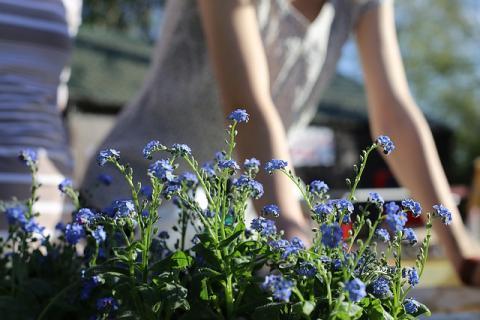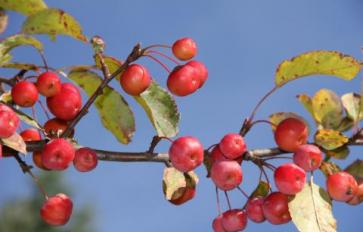
You eat local. You eat what’s in season. You choose to eat sustainably. But what about your yard? Do you practice sustainable landscaping?
Traditional landscaping poses a concern when it comes to a healthy eco-system. Straining our natural resources and contributing to pollution, it is time to re-asses these practices and consider sustainable landscaping.
Sustainable landscaping is designed to implement practices that do not compromise the environment. Conserving our resources, reducing air and soil pollution, creating a friendly wildlife and pollinator habitat, and ultimately reducing negative environmental impacts is what sustainable landscaping has to offer. Requiring less water, less maintenance, and producing less waste, it can restore balance to a disturbed eco-system.
Take a look outside and consider what goes into the upkeep of your landscape. How much of your water bill is soaked up in the ground? Do you buy chemicals to keep out pests? How much time is spent mowing?
By considering what you plant, how you water, and the means in which you maintain your space, you can build a sustainable landscape. Take the leap and transform your space. The cost, both in monetary terms and health, will save you in the long run.
What you Plant
The determining factor in the upkeep of your landscape relies on what you grow. In order to produce a sustainable landscape, plants chosen will require fewer resources, less maintenance, and contribute to the surrounding habitat.
The best way to do this is to imitate nature. Non-invasive and native plants are ideal in this case. Whether heavy rain or periods of drought, they have adapted to the environment requiring less maintenance and resources. They promote diversity and create a habitat suitable for wildlife to thrive. Insects, birds, and butterflies in the area rely on native plants for survival. Preserving the existing natural vegetation is a contributing factor in healthy soil and erosion prevention. You can also add plants to your garden that naturally act as bad insect repellents, as well as make your own natural pesticides to eliminate the need for harmful chemicals.
Just as buying local produce is part of eating sustainably, so is landscaping. Buying local plants reduces the carbon footprint. Shop at a nearby nursery or garden center. Also, choose plants that do not require gas powered tools, such as lawnmowers. Opting for perennials as opposed to annuals is another factor to consider. They will live for years, requiring less resources than annuals that must be reestablished on a yearly basis.
How You Water
Unsustainable landscapes waste an exorbitant amount of water keeping plants alive. The entire concept of sustainable landscaping reduces the use of water. The idea is that once plants are established, they will require very little, if any, of our potable water.
There are ways in which we can reserve the tap for drinking and gain water naturally. For those of you that read about harvesting rainfall, this is an excellent concept. Capturing roof runoff to be stored for later use acts as a landscape reservoir, conserving potable water. A rain garden is another viable option. A form of rainwater harvesting, a rain garden is a depression in the landscape that collects rainwater and slowly reintroduces it into the soil. It not only takes strain off the municipal water, it helps in preventing stormwater pollution.
Maintenance Methods
The major issue with non-sustainable landscaping practices is the negative impact maintenance has on the environment for the sake of one's preferred aesthetic. Expanding beyond a traditional lawn landscape and embracing the beauty of diversity can still provide the aesthetic desired without the negative impact.
There are several methods to consider in terms of yard work. Eliminating the use of chemicals is a start. When harmful chemicals are used in fertilizer, those chemicals work their way into the soil. This in turn pollutes the environment and depletes the soil of nutrients. Valuable nutrients can be restored to the soil by creating organic compost out of household goods and utilizing yard waste, such as leaf mulch. The amount of yard trimmings that wind up in the landfill is astounding. Turn that waste into compost.
Recycle household material or purchase recycled material when constructing a landscape design. This will eliminate the need for freshly cut wood and can make for creative landscaping. When purchasing material be sure to buy local. Locally produced goods reduce greenhouse gas emissions and save energy. Click here for 10 more ways to garden sustainably.








